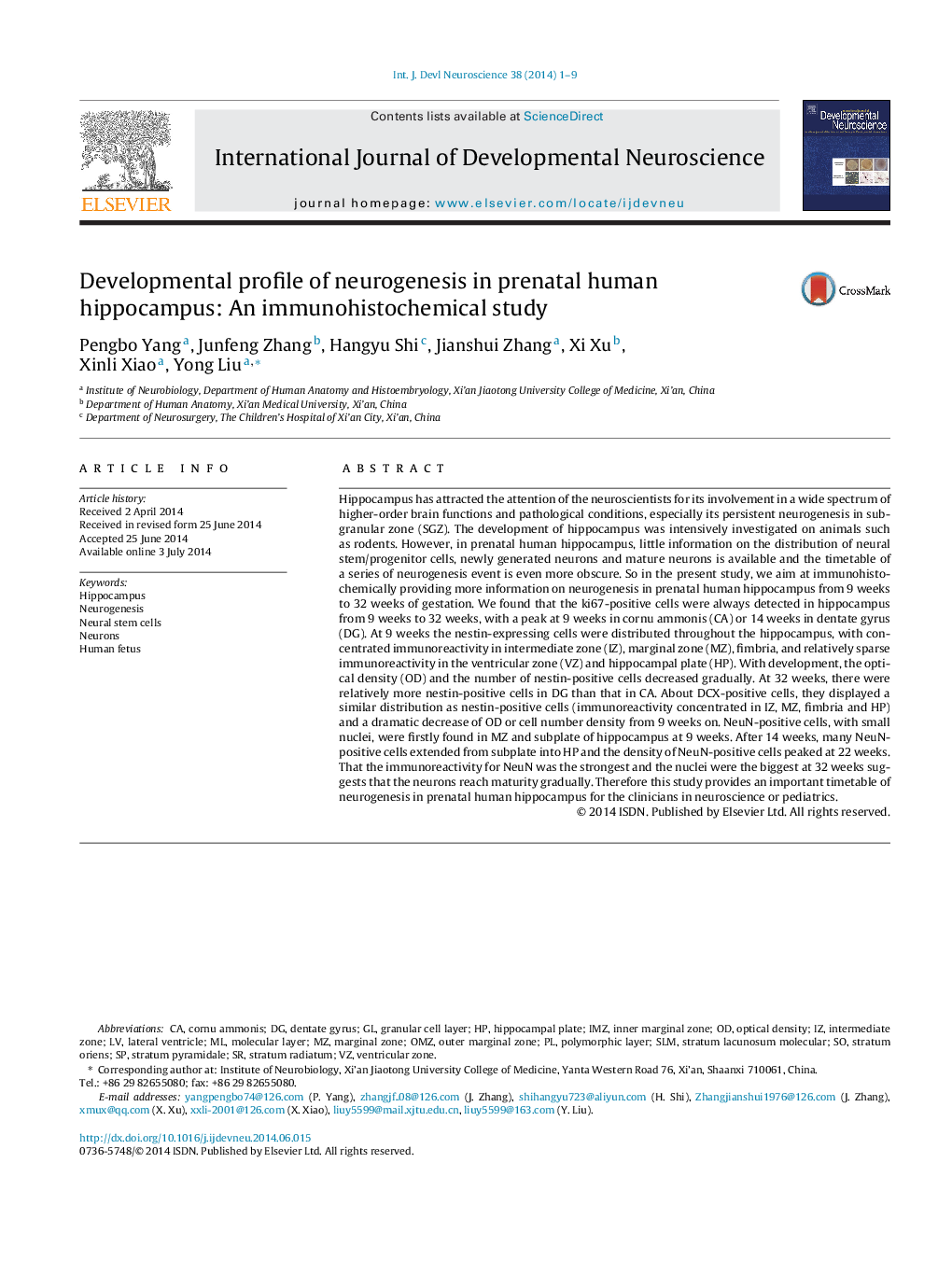| Article ID | Journal | Published Year | Pages | File Type |
|---|---|---|---|---|
| 2785949 | International Journal of Developmental Neuroscience | 2014 | 9 Pages |
•We obtained 34 hippocampuses of human fetus at different gestational ages.•We examined the distribution of cells related to neurogenesis.•Neural stem cells and immature neurons decreased gradually with development.•Proliferating cells peaked at 14 weeks in dentate gyrus, 9 weeks in cornu ammonis.•Mature neurons appeared at 9 weeks and peaked at 22 weeks in cornu ammonis.
Hippocampus has attracted the attention of the neuroscientists for its involvement in a wide spectrum of higher-order brain functions and pathological conditions, especially its persistent neurogenesis in subgranular zone (SGZ). The development of hippocampus was intensively investigated on animals such as rodents. However, in prenatal human hippocampus, little information on the distribution of neural stem/progenitor cells, newly generated neurons and mature neurons is available and the timetable of a series of neurogenesis event is even more obscure. So in the present study, we aim at immunohistochemically providing more information on neurogenesis in prenatal human hippocampus from 9 weeks to 32 weeks of gestation. We found that the ki67-positive cells were always detected in hippocampus from 9 weeks to 32 weeks, with a peak at 9 weeks in cornu ammonis (CA) or 14 weeks in dentate gyrus (DG). At 9 weeks the nestin-expressing cells were distributed throughout the hippocampus, with concentrated immunoreactivity in intermediate zone (IZ), marginal zone (MZ), fimbria, and relatively sparse immunoreactivity in the ventricular zone (VZ) and hippocampal plate (HP). With development, the optical density (OD) and the number of nestin-positive cells decreased gradually. At 32 weeks, there were relatively more nestin-positive cells in DG than that in CA. About DCX-positive cells, they displayed a similar distribution as nestin-positive cells (immunoreactivity concentrated in IZ, MZ, fimbria and HP) and a dramatic decrease of OD or cell number density from 9 weeks on. NeuN-positive cells, with small nuclei, were firstly found in MZ and subplate of hippocampus at 9 weeks. After 14 weeks, many NeuN-positive cells extended from subplate into HP and the density of NeuN-positive cells peaked at 22 weeks. That the immunoreactivity for NeuN was the strongest and the nuclei were the biggest at 32 weeks suggests that the neurons reach maturity gradually. Therefore this study provides an important timetable of neurogenesis in prenatal human hippocampus for the clinicians in neuroscience or pediatrics.
